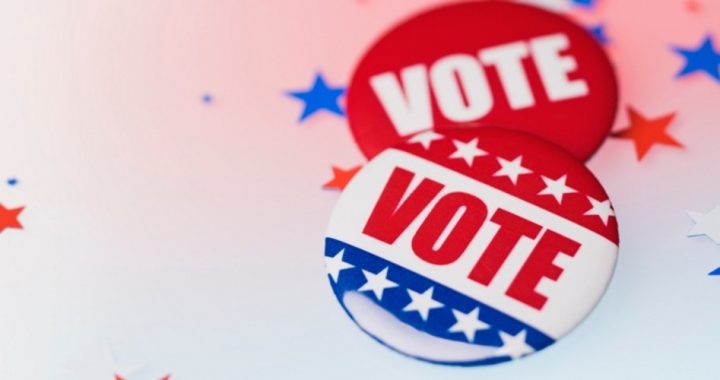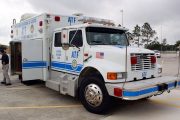
The local elections in Philadelphia on Tuesday demonstrate the continuing problems with the use of machines for the casting of votes. And since Pennsylvania — a state President Donald Trump unexpectedly won in the 2016 presidential contest — is expected to be a key state in next year’s presidential race, the importance cannot be overstated.
New touchscreen voting machines were used in Philadelphia, but several problems were reported. In one instance, incumbent Council member Cherelle Parker’s name did not even appear. “I was not happy at all,” Parker said. “About 25 to 30 people, it was reported for me, voted but they cast their votes for Jamie G.” The problem was that “Jamie G.” was in a different council district.
In Mount Airy, a voter noticed that incorrect names were listed and told a poll worker. The machine was shut down, leaving 24 people in line waiting to vote. It is not known how many people had already voted — for candidates who were not even in their district.
Elections are the method we use to choose many of our public officials, from the president to members Congress on down to the state and local levels. While many Americans are naturally unhappy with the results, they tend to accept them — if they believe the results are accurate, and not subject to machine error or even outright fraud.
Before the adoption of the secret ballot, most elections were held in a manner in which other members of the community could see how everyone voted. But with concerns that how one voted might result in intimidation, job loss, loss of customers, and the like, elections began to be conducted in a manner in which a person could keep his votes secret.
For all its merits, the secret ballot greatly increases the opportunity for fraud. In the days in which secret-ballot elections were all conducted with paper ballots, stuffing the ballot box sometimes happened. Of course the full extent of such activities is not known, but it is known that Lyndon Johnson’s “victory” in a U.S. Senate race in Texas in 1948 was secured through stuffing the ballot box. Some of the additional 200 votes that were cast in Ballot Box 13 (Precinct 13 in Jim Wells County) used the names of people who died, but their names were still on the rolls. This is known as “tombstone voting.”
Another problem with paper ballots is that the process of counting the votes can be long and tedious. Because of this, various methods have been used over the years to speed up the tabulation of votes. For example, the presidential election in Florida in 2000 between Texas Governor George W. Bush and former Vice President Al Gore was thrown into doubt because of the use in some counties of what is known as the “punch-card” ballot.
With a punch-card ballot, a voter “punches” a hole next to the name of the person for whom he or she wishes to vote. The ballot can then be “read” by a machine. But with the margin of Bush’s victory (less than 600 votes out of six million cast statewide), this led to disputes as to whether the voter had actually intended to vote for a candidate when the ballot was only “dimpled.” In other cases, the paper was not completely punched out, leading to what was known as “hanging chads.”
Other machines have been used over the years, but they all have problems. With computer technology, machines can be programmed to produce the results instantaneously when the polls have closed, but therein lies a problem: Computers can be programmed or hacked to produce results different from how someone actually voted.
As Lawrence Norden of the Brennan Center has said, “People weren’t thinking about voting system security and all the additional challenges that come with electronic voting systems. Moving to electronic voting systems solved a lot of problems, but created a lot of new ones.”
Some have advocated making it easier for voters to cast ballots — with Internet voting. Of course, the potential for abuse of that voting system is obvious.
The number one priority for any voting system is not making it easier for the voter, or even creating a system in which the results are known quickly, as desirable as those two goals are. The most important things are for the results to be accurate and trustworthy.
People concerned about election integrity should look to states such as Oklahoma, which uses what is known as the “optical scan ballot.” With this, the voter uses a paper ballot, which is then inserted into an optical scan machine, which counts the vote immediately. If there is a need for a recount in a close election, or some other need to double-check the votes, the paper ballots are readily available.
I participated in a recount in a voting precinct myself a few years ago, and I can testify that the optical scan machine got it exactly correct when compared to the paper ballots.
But the fact that some states lack the will or the money (or both) to use such machines, and resort to methods such as Internet voting or “touch screens,” is yet another argument for continuing to choose the president via the Electoral College. While machine malfunction, or outright fraud, can affect the reported vote within states, they cannot affect the electoral vote count from other states. Were we to have a national popular vote, instead of a state-by-state popular vote as we do now with the Electoral College, the incentive for some states and localities to pad the vote for their favored candidate would be greatly increased.
Because of this — along with many other reasons — we should stick to the Electoral College, and all states should use paper ballots in their voting systems.
Steve Byas is a university instructor in government and history, and is the author of History’s Greatest Libels. His work has appeared in The Oklahoma Constitution newspaper, the Chronicles of Oklahoma, the Tennessee Historical Quarterly, and he is the author of two mystery novels and a high-school government textbook that was used in 19 states. He can be contacted at [email protected]



